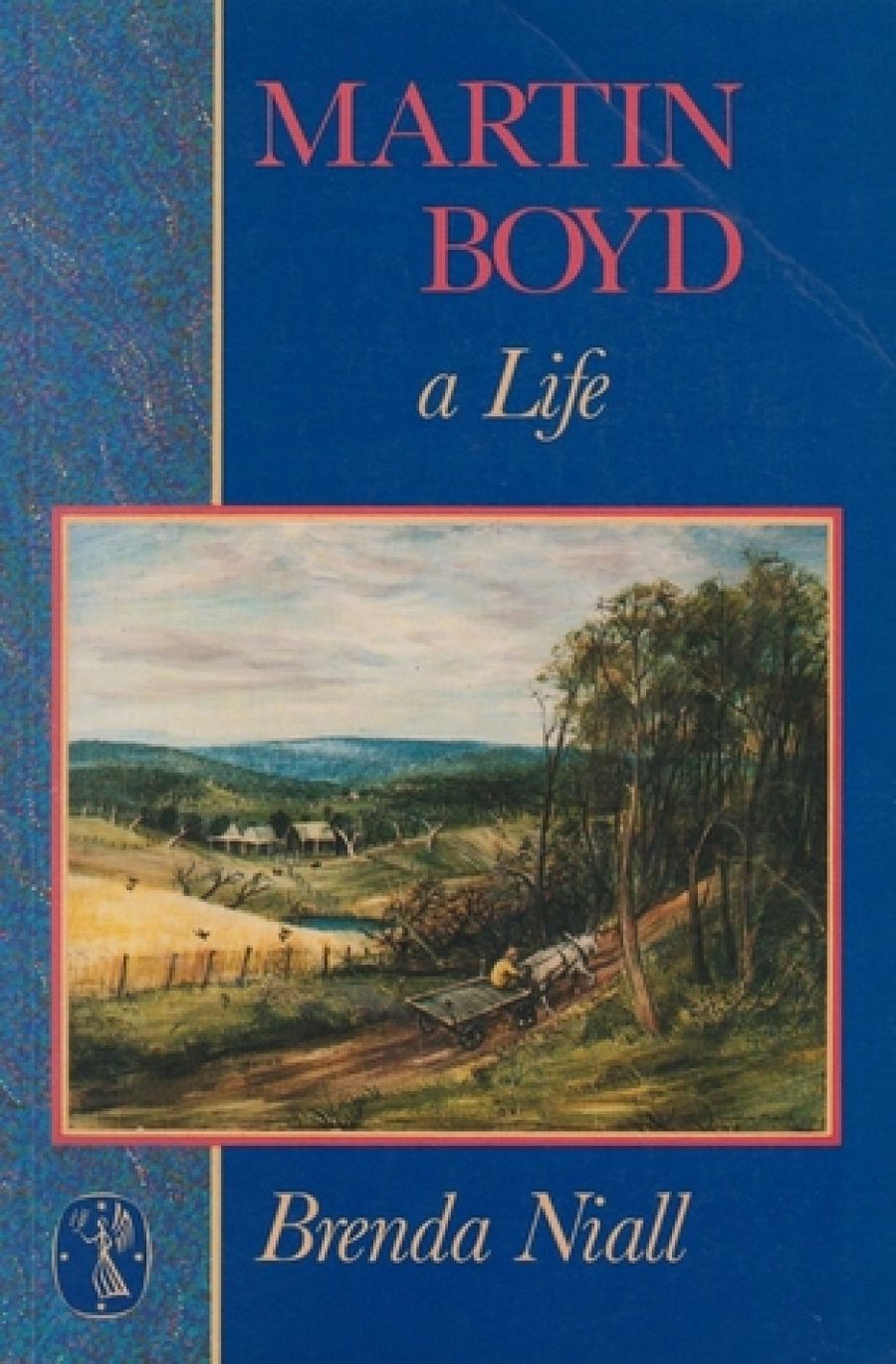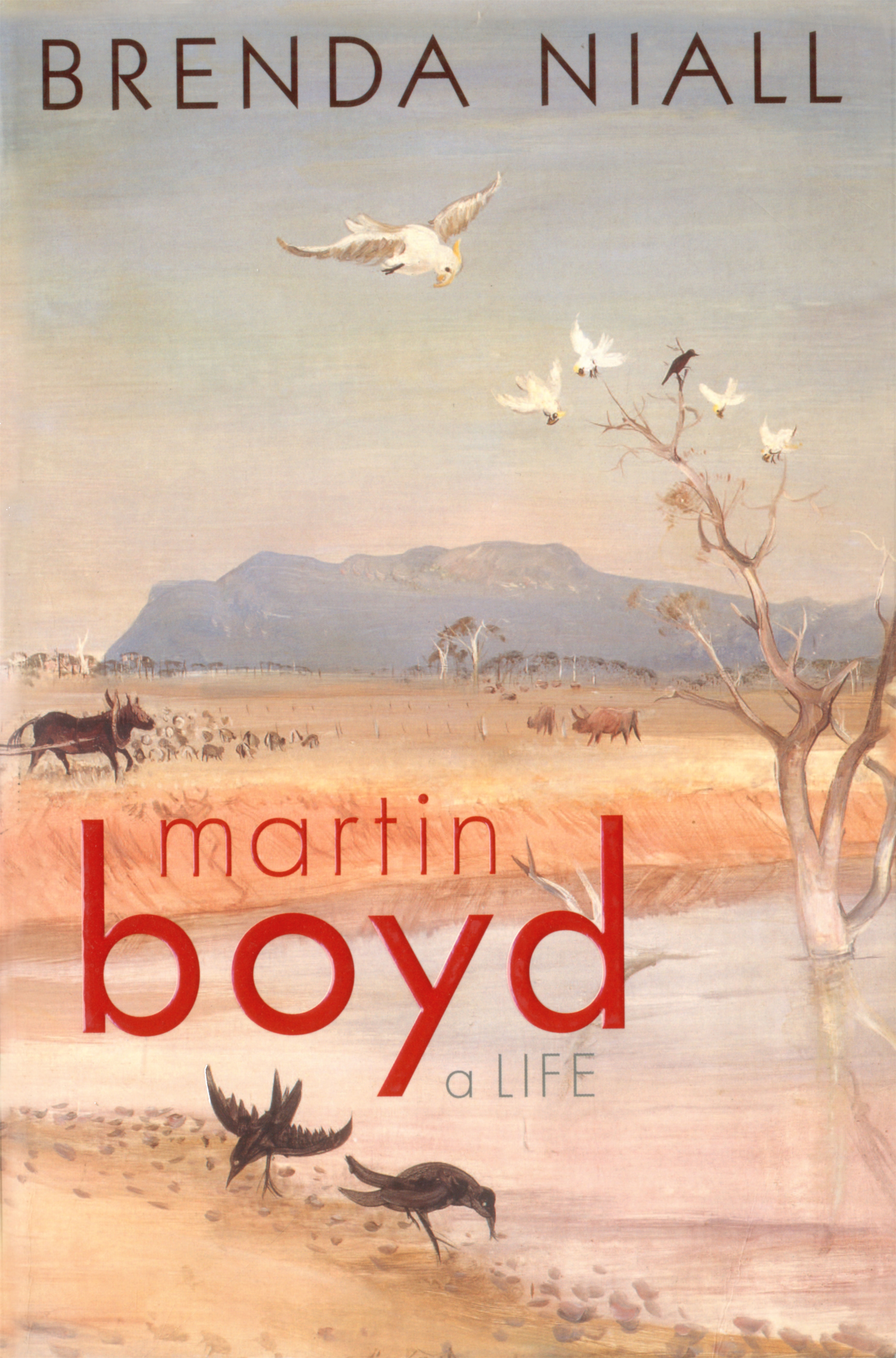
- Free Article: No
- Contents Category: Biography
- Review Article: Yes
- Article Title: Uncertain Identity
- Online Only: No
- Custom Highlight Text:
When Martin Boyd returned to Australia in 1948 after twenty-seven years in England, he set about restoring the Grange, the derelict former home of his mother’s family, the à Becketts. He had been disappointed to find how little known his novels were in Australia and he had difficulty in re-establishing himself with the Boyd family. Nevertheless he persevered with his impulsive scheme until he could draw ‘the curtains at night in the little sitting room ... [and] indulge the illusion of being in an English manor house.’ Among the à Beckett portraits and eighteenth-century furniture were his nephew Arthur’s biblical frescoes. In trying to be an English squire in the Australian countryside, surrounded by the artefacts of two continents and centuries, Boyd presents the image of a man who never quite found himself wholly at home anywhere.
- Book 1 Title: Martin Boyd
- Book 1 Subtitle: A Life
- Book 1 Biblio: Melbourne University Press 272 pp, $39.95 hb
- Book 1 Cover Small (400 x 600):

- Book 1 Cover (800 x 1200):

- Book 1 Readings Link: booktopia.kh4ffx.net/RAQj2
For some, though, he has been the Australian novelist who most thrives on re-reading for the subtlety of his insights into human behaviour, especially in its social aspects, and for the sanity of his belief in the possibilities of life as matter for pleasure. He clearly knows enough about pain and betrayal – about the darker possibilities, that is – to be free from imputations of triviality and slightness; and yet he has not often been taken as seriously as he deserves. One hopes that Dr Niall’s book will rekindle a proper interest in Boyd as a novelist; certainly he emerges from Martin Boyd: A life as a figure who can fill out the contours of biography.
The dualities and rootlessness noted above may have made him a restless figure, but they also made him an intensely interesting and, in the end, endearing one. Because of the sustained tension between those oppositions which are at the heart of Boyd as both man and artist, he resists easy categorisation. He is, for instance, a gregarious, sociable figure, who, equally, requires solitude: whether in the Australian bush or an English village, he needs society as much as he needs the works of nature or of art. In seeking society, he is as apt to be found joining the Melbourne Club as enjoying the playfulness of Italian ragazzi in his last years in Rome. Those who dismiss him as snobbish, on grounds of his preoccupation with the titled and distinguished, do him a disservice when they fail to take into account the opposing urges to egalitarianism. He admires the best when he sees it, whether it is exhibited in fun or furniture, in the King’s College Chapel or in the raffish disorder that accompanies a genuine artistic gift. He is conservative in many of his views on art and political organisation, but he is fiercely radical in his detestation of the rich and powerful (whether secular or spiritual leaders) who promote and profit from wars. Outspoken, even rancorous, in many of his opinions, he is also a very reticent man in relation to his own innermost self.
Nowhere is the dualism of his nature more insistently felt than in his own ‘geographical schizophrenia’, the phrase he used himself in A Difficult Young Man. Brenda Niall sums up this presence of mixed heritages at work in Boyd with typically evocative precision when she writes:
Naturally enough, given the Boyd family tradition and the period, Martin’s cultural background was more English than Australian. Yet because as artists his parents were instinctively responsive to the landscape around them his visual imagination was shaped not only by the imagined world of the English poets, but by the region of his childhood. No matter how much he idealized English gardens, meadows and castles, he could not fail to share his parents’ pleasure in the particular qualities of the light at Yarra Glen, the subtle grey-greens of the gums, and the blaze of wattle by the river.
His best work – that is, essentially, the Langton quartet – registers these divided allegiances in such a way as to enrich the artist’s perceptions even as they perpetually unsettled the man.
Dr Niall’s biography tempts one towards a strong of laudatory adjectives: it is wise, discriminating, authoritative, modest, kindly and perceptive. Her research has obviously been exhaustive, but its effect is never exhausting. She has had access to a vast range of hitherto unpublished letters and diaries, has tracked down reviews in three continents, has interviewed everyone, it seems, who might have been able to shed light on her subject, but she has not been intimidated by the sheer mass of information she has uncovered. She knows exactly how much about other people (family, friends and other contacts), how much about changing period and place she needs to give us so that we can properly contextualize the complex man who is at the centre of her investigations. The opening chapters which sketch the formative influences of Boyd’s childhood, the decisively differentiated heritages of the à Becketts and the Boyds, are done with a finely understood sense of their importance in our subsequent response to Boyd. She avoids entirely that tedium one often feels in reading biography that comes from waiting for the subject to start doing whatever it was that made us want to read about him in the first place.
What is especially adroit is the way in which Dr Niall has established connections between the facts of Boyd's life and their fictional transmutation. For, more than most authors, Boyd drew heavily on aspects of his own life and that of his family. One has always known that Boyd drew on the life of his grandmother Emma Mills for his portrait of Alice Langton and on his brother, the potter Merrie Boyd, for that of the tormented Dominic Langton, However, Niall’s researches prevent us from drawing too easy correspondences: Emma was considerably more complex than the somewhat statuesque Alice, and Dominic draws as much on Boyd himself as on Merrie. As well, she makes us realize how far Boyd reshaped factual experience in his autobiographies (A Single Flame, Day of My Delight) as well as in the novels.
Martin Boyd: A life may week teach many readers to revalue Boyd’s fiction, notably the neglected 1930s novels. It should certainly leave its readers with a heightened regard for Boyd himself: in a famous family, his achievements look more impressive with the passing of years. Dr Niall’s book is already immensely impressive; I expect it, like Martin Boyd’s novels, to go on yielding further pleasures with each rereading.


Comments powered by CComment